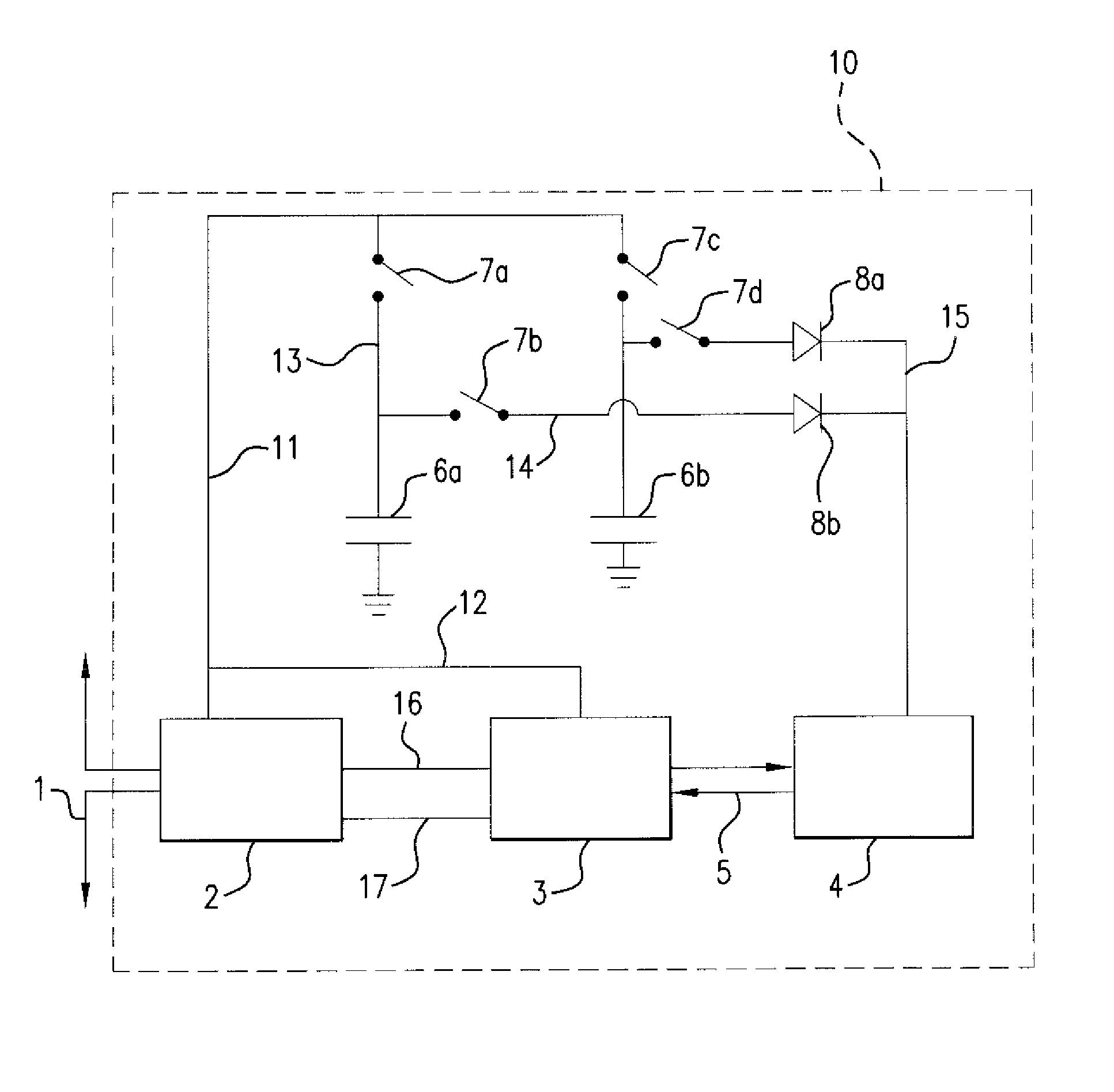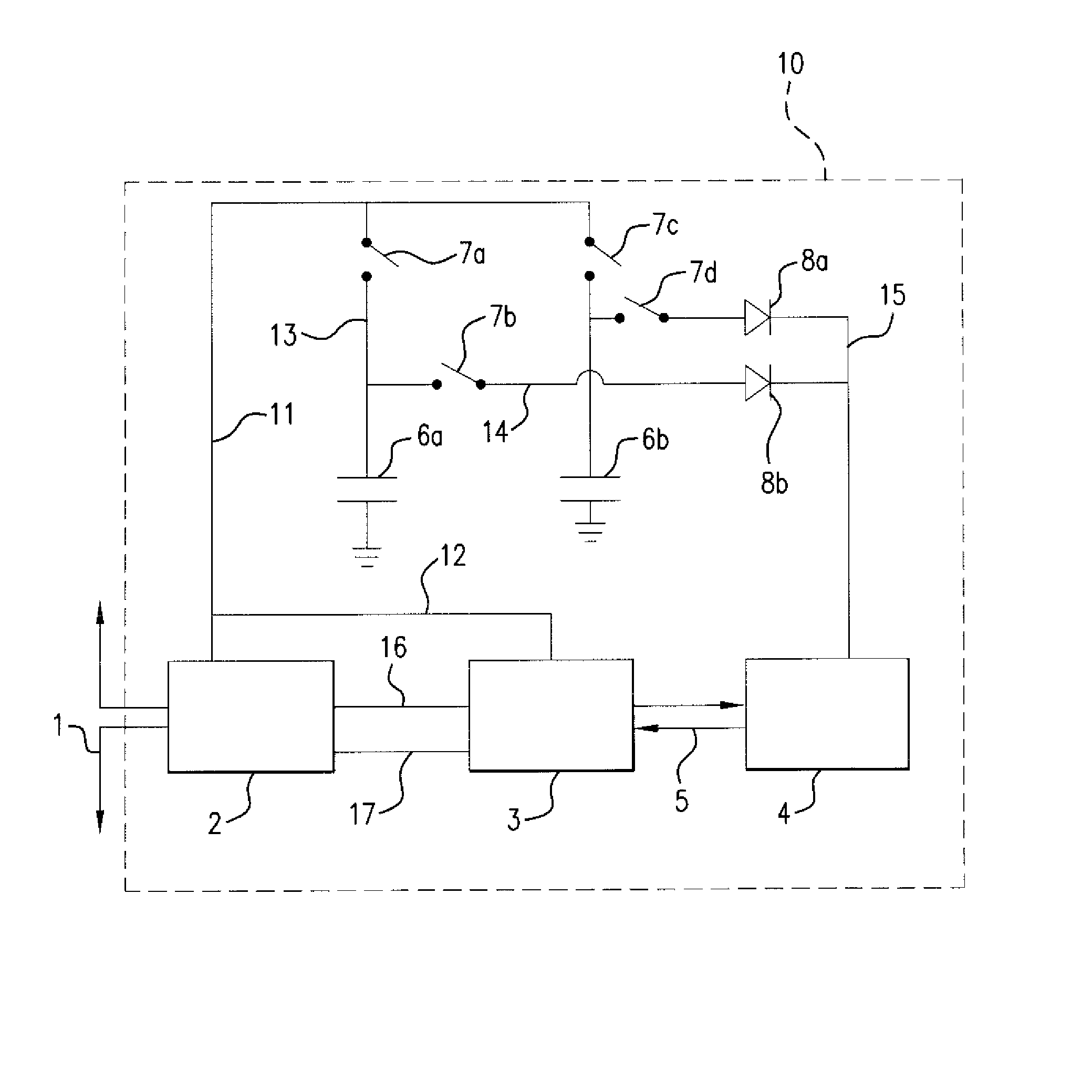Method and apparatus for protecting RFID tags from power analysis
a technology for power analysis and rfid tags, applied in digital transmission, liquid/fluent solid measurement, instruments, etc., can solve the problems of difficult operation and even higher power consumption, and achieve the effect of reducing the number of power consumption information
- Summary
- Abstract
- Description
- Claims
- Application Information
AI Technical Summary
Benefits of technology
Problems solved by technology
Method used
Image
Examples
Embodiment Construction
[0025]Referring now to the drawing, the preferred embodiment will now be described in detail. Shown is an RFID tag 10 which contains a power extraction circuit 2 connected to an antenna 1 that communicates with a tag reader (not shown) which has its own antenna and circuitry as is standard and known in the art. The antenna 1 is also coupled to a modulation-demodulation circuit 3 by leads 16 and 17 going through circuit 2. The circuit 3 is coupled to a logic and memory circuit 4, which is the computational element of tag 10. Data and control signals 5 pass between the circuits 3 and 4. The set-up thus far is standard for an RFID tag.
[0026]The object of the preferred embodiment is to allow circuit 4 to operate continuously without being directly powered by the power extraction circuit 2 during all or part of its computational function. To this end, two capacitors 6a and 6b are connected to ground on one side and to contacts of switches 7a and 7c, which switches 7a and 7c are connected...
PUM
 Login to View More
Login to View More Abstract
Description
Claims
Application Information
 Login to View More
Login to View More - R&D
- Intellectual Property
- Life Sciences
- Materials
- Tech Scout
- Unparalleled Data Quality
- Higher Quality Content
- 60% Fewer Hallucinations
Browse by: Latest US Patents, China's latest patents, Technical Efficacy Thesaurus, Application Domain, Technology Topic, Popular Technical Reports.
© 2025 PatSnap. All rights reserved.Legal|Privacy policy|Modern Slavery Act Transparency Statement|Sitemap|About US| Contact US: help@patsnap.com


